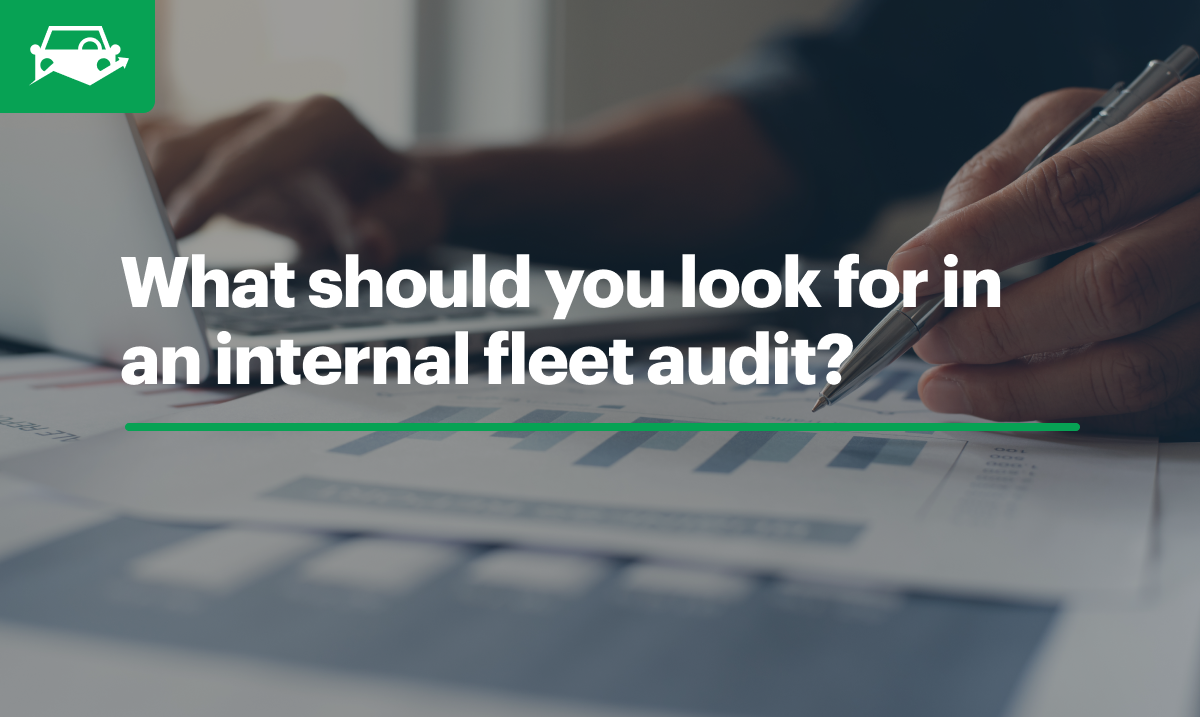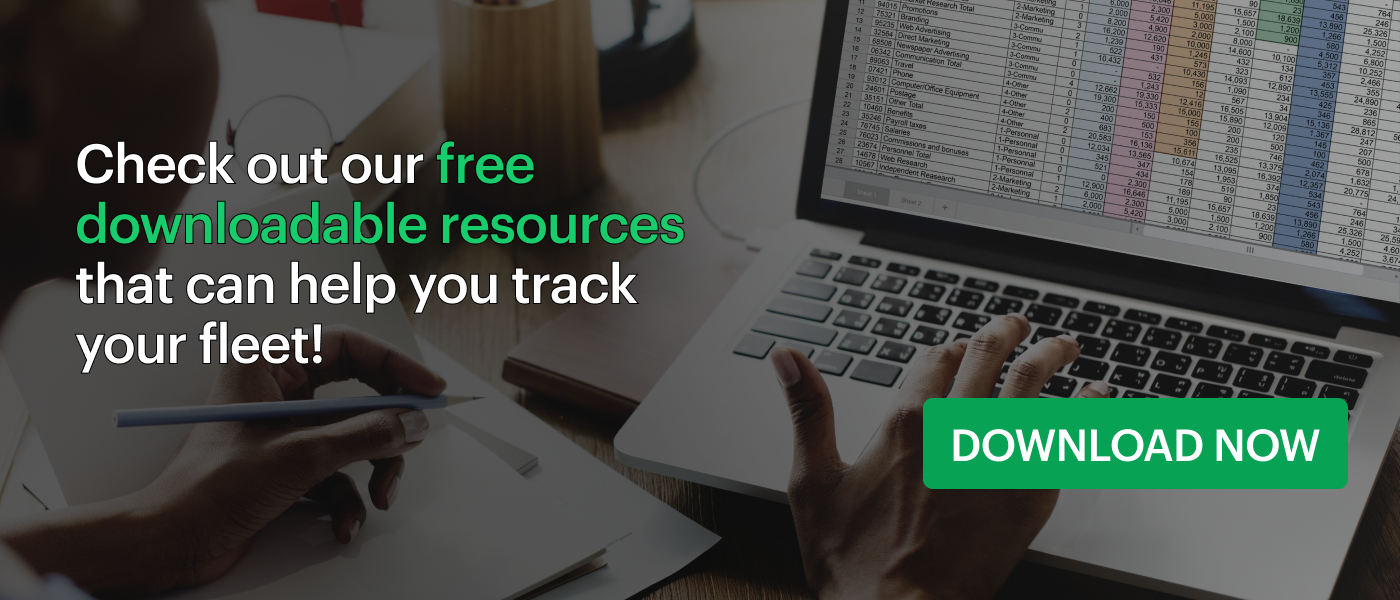Whether you’re trying to get your bearings with a new fleet or looking for ways to improve your current operation, an audit can be the perfect way to figure out where you stand and create a plan for addressing larger issues.

It can be easy for fleet managers to slip into the minutiae of their day-to-day tasks and start to feel disconnected with the overall health of their fleet. With the new year approaching, it’s a perfect time to step back and take a look at your operation holistically, diagnose some problem areas and come up with a plan for tackling those issues.
This is where audits come in handy. Some people may balk at the mere mention of an audit – it’s far from the sexiest management task and has a generally negative connotation, especially in the fleet industry – but conducting a simple internal fleet management audit doesn’t have to be a massive burden of time or effort, and it can lead to some pretty revelatory information about your fleet.
Fleets are comprised of many individual facets that can become a bit of a bear to take on, but a good fleet audit checklist will provide you with an overview of exactly what to look for and guide you through the process in a more structured way.
We’ve outlined a couple of key areas to look at in your operation, what to look for and how to approach solutions to the problems you might uncover, as well as some useful links to guides on certain subjects for more detail.
1. Vehicle Data
2. Legal Documentation
3. Fleet-Budget
4. Technology
5. Processes and Policies
1. Vehicle Data
Many would argue that the assets or the drivers are the most important part of any fleet, and while we wouldn’t necessarily disagree, we’ve found that consistent data holds more power to make or break a fleet than anything else. Vehicles can be replaced, drivers can be trained out of bad habits, but if you miss out on collecting good vehicle data, it’s gone for good.
The kind of data we’re talking about lets you make more informed decisions about your operation. With the right data, you can know when to replace vehicles that no longer have a positive ROI, see when certain assets are requiring repeated services, or even spot driving behaviors that might be impacting a vehicle’s fuel efficiency.
So a solid first step in any audit is to make sure you have a system for recording and storing fleet vehicle data, as well as going through historical data. If your fleet has traditionally operated on paper, make sure that you have a clear system for filing and archiving records like inspections, work orders, timesheets and other pertinent documents.
It might also be a good idea to consider digitizing old paper-based data, so that you have more consistent access to it in the future without the clutter and confusion. It will take some time, for sure, but if you come up with an incremental plan, you can tackle it over time.
The easiest way to ensure that you keep well organized, consistent data is to employ a cloud-based fleet management software to manage your vehicle data. It will easily integrate with other third party providers you use for things like telematics and fuel cards to allow you to track basic data from maintenance, inspections and expenditures and automate them into calculations like:
- Total cost of ownership
- Utilization rate
- Cost per mile
Collecting this data continually over time means you get to make strong, data driven decisions that will improve your fleet’s bottom line, make vehicles last longer at a more profitable margin and alert you to any financial or operations inconsistencies faster than a manual review of paper forms and spreadsheets ever could.
If your data is in a bad place, or if it’s virtually nonexistent, all is not lost. The best time to start tracking your vehicles is now, and Future You will thank you for the time and effort you put in to create more actionable insights down the road.
If you’re not totally ready to jump headfirst into new tech, start with something simpler, like our Fleet Maintenance Spreadsheet. Our template allows you to track odometer readings, preventive maintenance schedules and cost per mile, and in time you’ll build a good service record for each vehicle in your fleet. We also have resources for work orders and inspections that can work in tandem with our spreadsheet, so check them out for your own use or inspiration.
2. Legal Documentation
Maintaining proper documentation on each vehicle is vital to avoiding issues on the road when things like accidents or road checks come up, especially for commercial fleets – if you don’t have the right documents on hand, you could be facing hefty fines that never reflect well on your bottom line.
A fleet audit is the perfect time to make sure that you have certain basic documents in order to stay compliant, both in-vehicle and stored away in the office:
- Tag/title information
- Insurance
- Driver certifications/CDL
- MVR
- Incident records -Employee documentation, including background checks, tax forms, drug/alcohol testing results and performance reviews
Another significant requirement you’ll want to be sure you have a good system for maintaining is driver vehicle inspection reports (DVIRs). Fleet management software makes this simple, with app-based forms that can be completed from a phone or tablet and stored digitally, but if you use more manual processes, each driver needs to keep a consistent log of DVIRs in the cabin of their vehicle at all times.
Documentation is also necessary for selling and acquiring new vehicles, which is a process every fleet manager will inevitably run into. In addition to having the registration and title, you’ll need a certificate of origin from the manufacturer and a federal odometer statement.
3. Fleet Budget
As we previously stated, having data is great for managing the financial side of your fleet, but in order to make it worth your while, you have to actually apply it to something. Internal audits are a great time to look over past fleet budgets and get a measure of how successful those projections have been while you prepare for a new fiscal year.
You’ll want to take a look at the overall costs of running the fleet, from each vehicle’s total cost of ownership to fuel expenditures and maintenance costs, and assess how those budgets have grown or changed over the years with the overall growth of the company. Look for opportunities to reduce costs in your upcoming budgeting, and as you discover any discrepancies or fraud, be prepared to reconcile them with new processes or protections, such as locking down fuel card expenditures to remedy an overinflated fuel budget.
4. Technology
Audits also present a fantastic opportunity to assess the technology your fleet employs to increase efficiency and streamline everyday tasks. There are a couple of pieces of tech that you’re required to have in place, but there are also some more optional solutions that can stand to make your job a whole lot easier while creating a good return on investment.
Telematics devices are a forgone conclusion for fleets these days, as they’re required at the federal level, but considering the amount of benefit they present outside of compliance, you’ll want to make sure that you’re using the right product to wring all the data you can out of your telematics. From GPS tracking and route optimization to driver behavior monitoring and odometer readings, telematics devices can be a powerful tool for aggregating data from vehicles on the job and analyzing how much money you could be making or losing on the road. Here’s a quick rundown on what you could be missing in your telematics data.
Similarly, most fleets utilize some form of fuel card to manage their fuel expenditures, and while it may be easy to go with what seems to be the cheapest or simplest option, it’s important to get a fuel card that actually meets your fleet’s needs and gives you control over one of your largest expenses. We’ve got a handy video and guide you can check out on selecting the right fuel card.
There are so many other tech solutions you can put in place to help streamline your operation, but the key to making all of your tech work in harmony is good fleet management software. A cloud-based fleet management solution can take all of the moving parts of your tech stack and align them in a single platform, so that you’re not constantly having to manage logins and access and multiple tabs – everything is right there for you to see and export into simple reports.
If you’re already using fleet management software, use your fleet audit as an opportunity to go through your dashboards and make sure everything is cleaned up and optimized for your employees to use easily, and that all of your other third party integrations are properly connected to your fleet dashboard. This is also a great time to really break down the pros and cons of your current system, calculate the ROI you’re getting from it and decide if you might need something different in the coming year.
If you don’t have a software solution, take a look at your fleet operation closely and see if you might benefit from it. We have some resources you can take advantage of to figure out if fleet management software might be right for you.
- 8 Advantages of Cloud-Based Fleet Software
- Functionality Over Cost: Finding the Perfect Fit in Fleet Management Software
5. Processes & Policies
Fleet revolves around vehicles, routes and maintenance most days, but it’s important to also analyze the human side of your operation, namely the processes and policies you put in place to keep everything functioning day-to-day.
Maintenance, along with fuel, makes up the biggest piece of most fleets’ budgets each year, so it’s vital to ensure your processes for inspections, preventive maintenance, repairs and working with third-party maintenance providers are airtight to avoid any costly inefficiencies. As you audit these processes, look for ways that you can save drivers’ and techs’ time with simplification, like using electronic driver vehicle inspection reports that can be easily completed from a phone, or setting up an integration to connect more easily with the shops you use for maintenance.
You’ll also want to venture more into the human resources side of operations to ensure that your operators are happy, safe and on a positive trajectory with your company so you can avoid any massive turnover. Consider surveying drivers to get their honest feedback on what you could be doing to increase their satisfaction, as well as analyzing safety data from telematics and past incidents to fill any educational gaps on driver safety.
Internal fleet audits become a lot easier when all of your fleet data is organized and easy to find. That’s where Fleetio comes in handy.
Our centralized platform lets you keep everything you need to streamline your operations in one place, from driver documentation to service records. Sign up for a free trial or schedule a demo!





